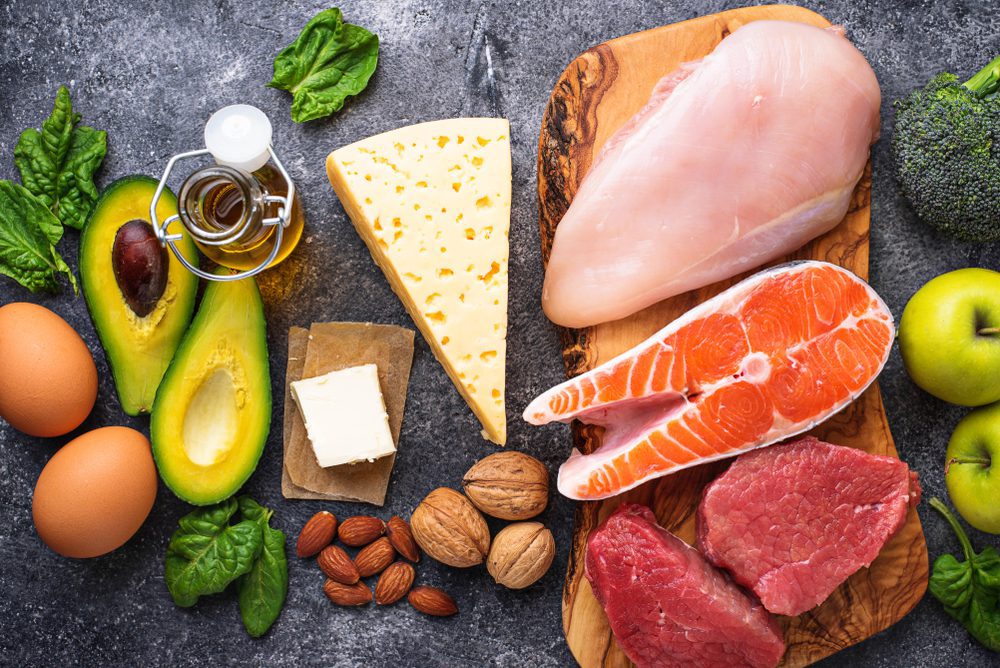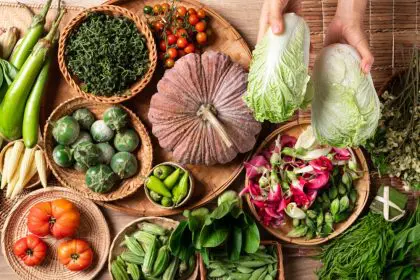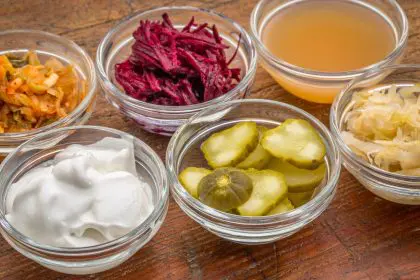Let’s face it—managing diabetes can feel like you’re walking through a nutritional minefield. One wrong step and your blood sugar goes haywire, leaving you feeling like garbage for hours. But here’s the kicker—some of the foods you think are helping might actually be making things worse, while others you’ve been avoiding could be your new best friends.
That “healthy” breakfast you’ve been eating? The smoothies you make with love every morning? They might be blood sugar bombs in disguise. Meanwhile, foods you’ve crossed off your list years ago might deserve a second chance.
It’s time to separate fact from fiction and discover what your body really needs. No fad diets, no miracle cures—just straight talk about which foods deserve a place on your plate and which ones should get the permanent boot.
The blood sugar basics you need to know
Before diving into specific foods, let’s get real about what actually happens in your body when you eat. Diabetes fundamentally changes your relationship with carbohydrates. When you consume carbs, they break down into glucose, causing your blood sugar to rise.
For most people, insulin swoops in to escort that glucose into cells where it’s used for energy. But with diabetes, this system breaks down—either your body doesn’t make enough insulin or your cells ignore it. The result? Glucose builds up in your bloodstream instead of feeding your cells.
This is why not all carbs are created equal. Some trigger rapid spikes followed by crashes, while others cause gentler, more manageable rises. The glycemic index and glycemic load help measure this effect, but they’re just part of the story. Fiber, fat, and protein all affect how your body processes carbohydrates.
What many people miss is that managing diabetes isn’t just about avoiding sugar—it’s about understanding how different foods affect your unique body. Your blood glucose monitor is the most honest nutritionist you’ll ever have.
The worst offenders that spike your sugar
These foods might seem innocent enough, but they’re trouble for blood sugar control.
White bread and pasta act almost like pure sugar in your body. They’re stripped of fiber and nutrients during processing, leaving little more than easily digested carbs that hit your bloodstream with rocket speed. Whole grain alternatives aren’t perfect, but they’re significantly better choices.
Breakfast cereals are morning sugar bombs, even many “healthy” varieties. Some contain more sugar per serving than dessert. Check labels carefully—anything with double-digit sugar content is a red flag, regardless of health claims on the box.
Fruit juices might seem nutritious, but they concentrate the sugar from multiple fruits while stripping away the fiber. Your body processes even unsweetened juice similar to soda. A whole orange gives you fiber to slow digestion—orange juice just gives you a sugar spike.
Rice cakes have a health halo but are essentially pure starch with a sky-high glycemic index. Despite being low in calories, they can send blood sugar soaring higher than many candy bars. Those seeking a crunchy snack would be better served by nuts or seeds.
Fat-free products often compensate for flavor by adding extra sugar or refined carbs. The fat in food actually helps slow digestion and prevent blood sugar spikes. Regular versions in appropriate portions often prove friendlier to glucose levels than their “diet” counterparts.
Dried fruits concentrate natural sugars into small packages easy to overeat. Just a small handful of raisins contains as much sugar as a whole bowl of grapes. Their convenience comes at a cost to your blood sugar stability.
Surprising foods that may actually help
Not all foods get the credit they deserve when it comes to blood sugar management.
Dark chocolate with high cocoa content might seem off-limits, but research suggests the flavanols in dark chocolate may improve insulin sensitivity. Stick to varieties with at least 70% cocoa and minimal added sugar—a small square makes a satisfying treat with minimal impact.
Berries offer sweetness with a remarkably low glycemic impact. Their high fiber content slows sugar absorption while providing antioxidants that may help protect blood vessels from diabetes-related damage. Blueberries, strawberries, and blackberries shine as nature’s candy alternatives.
Full-fat yogurt beats low-fat versions for blood sugar control. The fat helps slow digestion of the naturally occurring milk sugars, while the protein provides staying power. Choose plain varieties and add your own berries for sweetness without the added sugar.
Sweet potatoes offer complex carbs that digest more slowly than white potatoes. They’re packed with fiber and nutrients that support overall health while causing gentler blood sugar rises. Preparation matters—baking preserves more nutrients than frying.
Eggs were once demonized for cholesterol, but research now suggests they have minimal impact on blood cholesterol for most people. They’re protein powerhouses that help stabilize blood sugar while providing essential nutrients. Their versatility makes them perfect for any meal.
Cinnamon isn’t just for flavor—this common spice has shown potential for improving insulin sensitivity in some studies. Adding it to foods may help your body process carbs more efficiently. Try sprinkling it on oatmeal, yogurt, or coffee for a flavorful boost.
The everyday champions for steady glucose
These foods deserve a regular spot in your meal rotation to help manage blood sugar.
Leafy greens like spinach, kale, and arugula should be your new best friends. Their fiber and minimal impact on blood sugar make them perfect bases for meals. The micronutrients they provide support overall health while their volume helps you feel satisfied.
Beans and lentils offer a powerful combination of protein and fiber that helps prevent post-meal spikes. They’re affordable, versatile, and have been shown to improve overall blood sugar control when consumed regularly. Try adding them to soups, salads, and grain bowls.
Fatty fish like salmon and sardines provide omega-3 fatty acids that may improve insulin sensitivity while reducing inflammation. Their protein content helps stabilize blood sugar, and their heart-health benefits are especially important for those with diabetes.
Nuts and seeds offer healthy fats and protein that help blunt blood sugar response when eaten alongside carbohydrates. Almonds, walnuts, chia seeds, and flaxseeds make perfect snacks or meal additions that keep you full without spiking glucose.
Avocados provide monounsaturated fats that support heart health while having minimal impact on blood sugar. Their creamy texture makes them satisfying additions to meals that might otherwise cause spikes. Try using them to replace less blood sugar-friendly spreads.
Olive oil contains polyphenols that may help reduce insulin resistance over time. Using it as your primary cooking oil supports both heart and metabolic health. Its flavor enhances meals while its fat content helps slow digestion of carbohydrates.
Smart swaps that make a difference
Sometimes it’s not about eliminating foods but making strategic upgrades.
Instead of white rice, try cauliflower rice. This simple swap cuts carbs dramatically while adding nutrients and fiber. Season it as you would regular rice—most people are surprised how satisfying it can be.
Rather than regular pasta, explore zucchini noodles or spaghetti squash. These vegetable alternatives provide the same textural experience with a fraction of the carbs. They take on sauces beautifully while adding extra nutrients to your meal.
Switch from crackers to cucumber rounds for dipping. They provide the same satisfying crunch without the processed carbs. Top with hummus, guacamole, or tuna salad for a snack that won’t spike your sugar.
Replace sugary breakfast cereal with Greek yogurt topped with berries and nuts. This morning meal provides protein, healthy fat, and fiber to start your day with stable energy rather than a blood sugar rollercoaster.
Swap potato chips for roasted chickpeas when you need a crunchy snack. They satisfy the same craving while providing fiber and protein that standard chips lack. The variety of available seasonings means you’ll never get bored.
Navigating the real world with diabetes
Perfect eating isn’t always possible. These strategies help you handle real-life situations.
Eating out doesn’t have to derail your blood sugar. Most restaurants will accommodate requests like substituting vegetables for starchy sides or serving dressings on the side. Don’t hesitate to ask questions about preparation methods or ingredients.
Portion size matters as much as food choice. Even diabetic-friendly foods can cause problems in large amounts. Using smaller plates, measuring servings initially, and eating slowly help prevent overdoing it without feeling deprived.
Timing can make the same food have different effects. Spacing carbohydrates throughout the day often works better than concentrating them in one meal. Your glucose monitor will help you determine your optimal eating schedule.
Hydration affects blood sugar too. Sometimes what registers as hunger is actually thirst. Staying well-hydrated helps your body process glucose more efficiently and may reduce cravings for carb-heavy foods.
Beyond the food rules
Managing diabetes goes beyond what you eat. Physical activity acts like an extra dose of insulin, helping move glucose from your bloodstream into your cells. Even a short walk after meals can significantly reduce post-meal spikes.
Stress raises blood sugar even without food. Finding effective stress management techniques—whether meditation, gardening, or quality time with friends—supports your nutritional efforts.
Sleep deprivation makes insulin resistance worse. Prioritizing good sleep hygiene improves both blood sugar control and food choices the next day.
The most effective eating pattern is one you can sustain. Small, consistent improvements beat perfect eating that lasts only a week. Be patient with yourself as you discover what works for your unique body.
Remember that perfect blood sugar doesn’t exist—even people without diabetes experience fluctuations. The goal is progress and overall trends, not perfection with every meal.
Your body is always talking to you through how you feel after eating. Listen to these signals alongside your glucose readings to develop an eating pattern that supports not just blood sugar control, but overall health and enjoyment of life.













